For more than a year, Warren Buffet’s Berkshire Hathaway has been raising cash at a dizzying pace. The institutional investing company has been selling everything from Bank of America stock to a few different S&P 500 exchange traded funds (ETFs) to some of the company’s share of Liberty Media Formula One stock.
Investors expected that this weekend’s letter from Buffett would start to detail where all of the cash had been invested. After all, filings just a few weeks ago showed that Buffet’s company had bought more Occidental Petroleum and Domino’s Pizza.
But instead of getting the details on how the cash had been deployed, investors got the following…
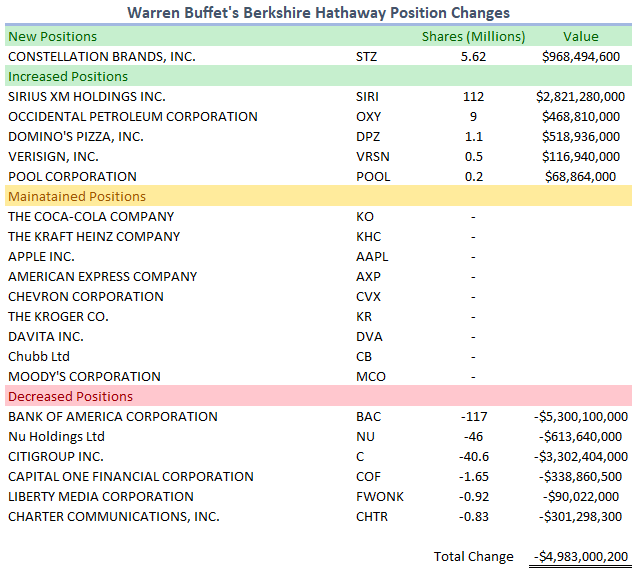 An accounting of just a few additions to the Oracle’s portfolio and massive sales among existing positions.
An accounting of just a few additions to the Oracle’s portfolio and massive sales among existing positions.
All-in-all, Buffett’s cash position increased by nearly $5 billion as the cash balances for Berkshire Hathaway swells to its largest figure ever over $300 billion. The value investors has been vocal about his positon in Occidental Petro (OXY) and Kroger (KR) over the last two years.
But there’s a problem with those positions and others on Buffett’s Wish List…
This is Why Buffett is Hoarding Cash
Buffett is best known as a value investor. Well, that and one of the pillars of Wall Street that companies can lean on when they’re in trouble.
Just look at the deals he put together during the Great Recession.
Buffett rode in on his white horse to save the day for companies like Goldman Sachs, Bank of America, General Electric and many more.
Liquidity for these companies had become an issue for these companies as banks and other financial institutions were on the brink of failing. Cash was needed and that’s exactly what Buffett had in the accounts at Berkshire Hathaway.
The Oracle came to Wall Street with the help of the Federal Reserve to broker deals that saved a number companies while Bear Stearns, Lehman Brothers and other brands of Wall Street burned to the ground.
$5 billion here, $3 billion there, relatively small deals for cash that Buffett easily had at his disposal, but the deals that he put together from those small investments are the thing that make Buffett the investor everyone wants to be.
Buying warrants and preferred stock in deals that only he could put together, the Oracle doubled his investments in GE, Goldman and Bank of America all while following his rules of being a value investor.
These companies were trading at fractions of the multiples they had seen ahead of the Great Recession, making them clear values for the investor that was willing to “Buy when others are fearful”.
I think he sees that opportunity on the horizon again.
Valuations are Historically Stretched
I know, I suggested just two weeks ago that Palantir was still undervalued, but Palantir is a completely different story than the market as a whole.
Stepping back to look at the valuation of the S&P 500 stocks shines some light on Buffett’s thinking.
Since the bear market of 2022, valuation of the S&P 500 has gone from a price/earnings ratio of 22 to its current readings above 30.
To put some historical perspective on this, the average P/E Ratio from 2000 forward sits around 17. In 2008-2009 the ratio shot through 30 as investors were buying stocks with both hands.
Here’s the chart…
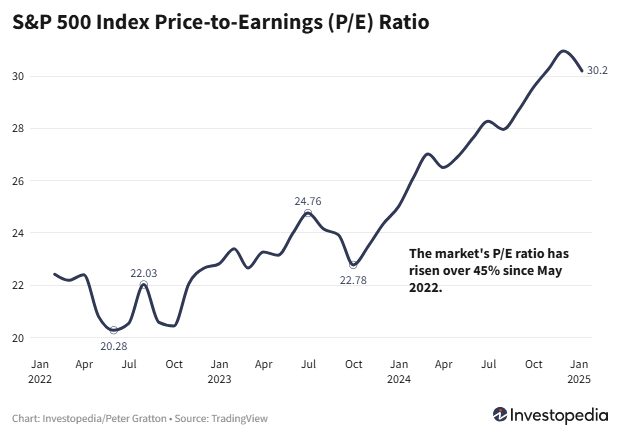 Back to Buffett’s Warning
Back to Buffett’s Warning
In 2009, Berkshire Hathaway went into the year having increased cash by 146%. At the time, it was the largest cash position that the company had held, just like today. With the S&P 500 P/E ratio moving above the mid-20s, Buffett was clearly planning for what he knew was to come.
Deregulation in the banking and financial sector had allowed several of the banks and other companies providing financing (GE included) to bolster their balance sheets and valuations. It’s one of the reasons that Buffett toargeted this sector for his valuation investments.
Today, similar deregulation may be entering the picture as well as a lowering of regulatory oversight in the energy patch. Note that Buffett’s investments in oil and energy companies have all but paused for now.
My guess is that he sees blood running through the streets in both sectors over the next six to 12 months.
Buffett is “Loaded for Bear” as they say, which coincides with a few of the signals that the market is sending.
Volatility is Sparking Fear Among Investors
Notably low for months, the CBOE Volatility Index (VIX) is starting to come to life.
The VIX is one of the market’s best “fear gauges”. It measure investors sentiment based on how much volatility options traders are pricing into the options market, specifically options on the S&P 500.
Low readings suggest that investors are seeing things optimistically as they price lower volatility outcomes into the VIX.
High readings suggest that investors are fearful of the market as they price more volatility into options prices.
Last week, the VIX started to see some life after sitting at some of its lowest readings of the last six months. This means that investors sentiment had started to become slightly bearish, which is always related to the beginning of a selling spree on Wall Street.
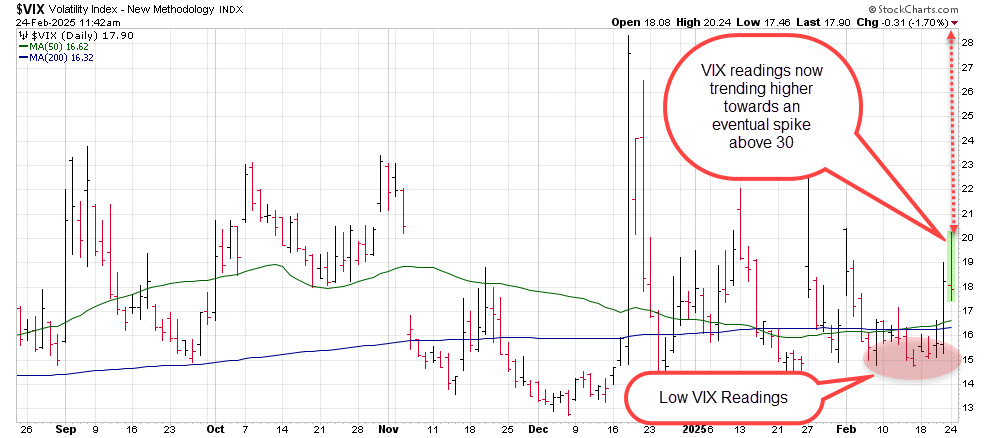 Friday’s dismal consumer sentiment reading gave investors the reality check that they didn’t want to see. Lower consumer sentiment suggests that you and I are preparing for a slowdown in the economy. That rips its way through the market, especially if there is the slightest hint of inflation over the next two months.
Friday’s dismal consumer sentiment reading gave investors the reality check that they didn’t want to see. Lower consumer sentiment suggests that you and I are preparing for a slowdown in the economy. That rips its way through the market, especially if there is the slightest hint of inflation over the next two months.
To put it simply, the market is on edge after two years worth of blindly buying stocks. Even the slightest increase in fear among investors will tip the market into a large scale corrective phase.
That’s what Buffett is doing, and its what you should be preparing for as well.
Here’s what to do from 10,000 feet above the market
The snapshot below is what investors should expect to see for the next 2-6 weeks.
Semiconductor (SMH) stocks along with biotech (XBI), large cap technology (XLK) and small cap stocks (IWM) are among the groups of stocks that investors have been piling into for the last two months.
Each of these sectors are considered “crowded trades” based on the heavy buying which has ballooned their P/E ratios to levels that suggest they have become overvalued.
These are the sectors where investors should check their portfolio for overexposure as they will be the groups of stocks that lead to the broader indices moving lower.
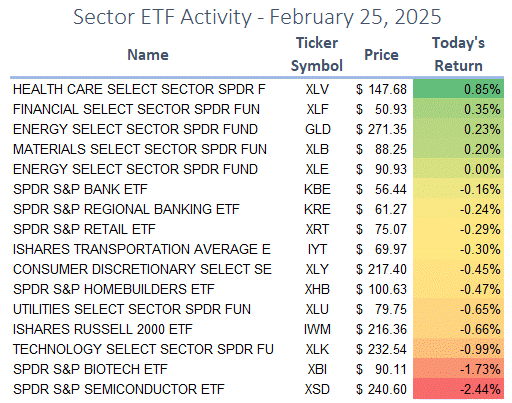 Avoid these Sectors like the Plague
Avoid these Sectors like the Plague
Add to this the housing (XHB) and retail (XRT) stocks.
Last week, I reviewed and warned about holdings in these sectors as the housing market appears to be teetering on another bear market run.
Interest rates and uncertainty on the economy have sidelined buyers as the busiest season of the year for housing has officially started. This has negative implications for the homebuilders (XHB) and retailers (XRT).
Both of these sector are considered in “corrective” phases with a high probability that they will fall into 4-6 month bear market trends, avoid them!
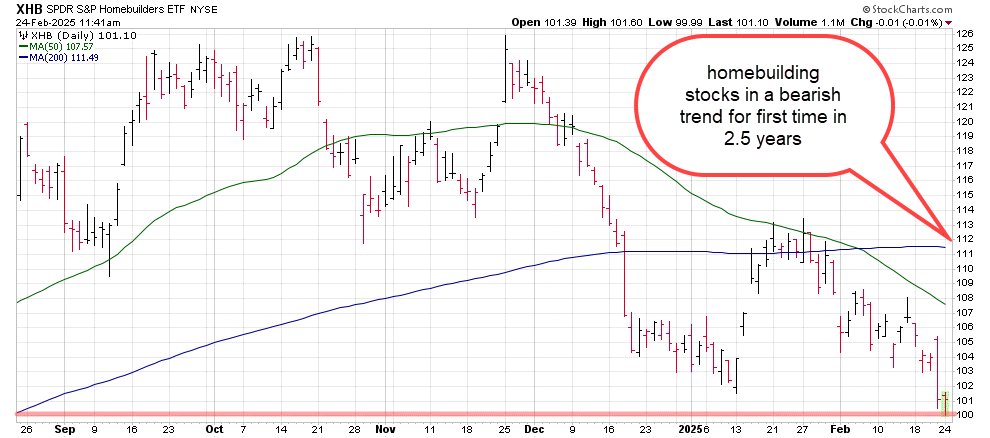 Wait for the Blood in the Streets
Wait for the Blood in the Streets
Like Buffett says, buy when others are fearful.
The VIX will tend to spike higher over the next few weeks as investors increase their reaction to the market’s selling. But it’s only when the VIX makes a final push higher, likely above 30, that you can start buying while everyone else is making their last push to sell stocks from their portfolio.
Among the groups to start buying will be the Nasdaq 100 (QQQ) and large cap technology (XLK) along with the small cap names that have become the stocks that investors are looking forward to being the next Magnificent Seven stocks, what I refer to as the “Flashy Five”.
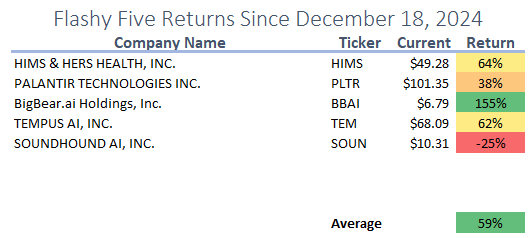 Outside of these stocks to watch, we will do our job over the next month to keep you on top of the moves and opportunities among stocks.
Outside of these stocks to watch, we will do our job over the next month to keep you on top of the moves and opportunities among stocks.
— Chris Johnson
Out of 23,281 Stocks... Only ONE is This Profitable and Undervalued. [sponsor]$3 billion+ in operating income. Market cap under $8 billion. 15% revenue growth. 20% dividend growth. No other American stock but ONE can meet these criteria... here's why Donald Trump publicly backed it on Truth Social. See His Breakdown of the Seven Stocks You Should Own Here.
Source: Money Morning
